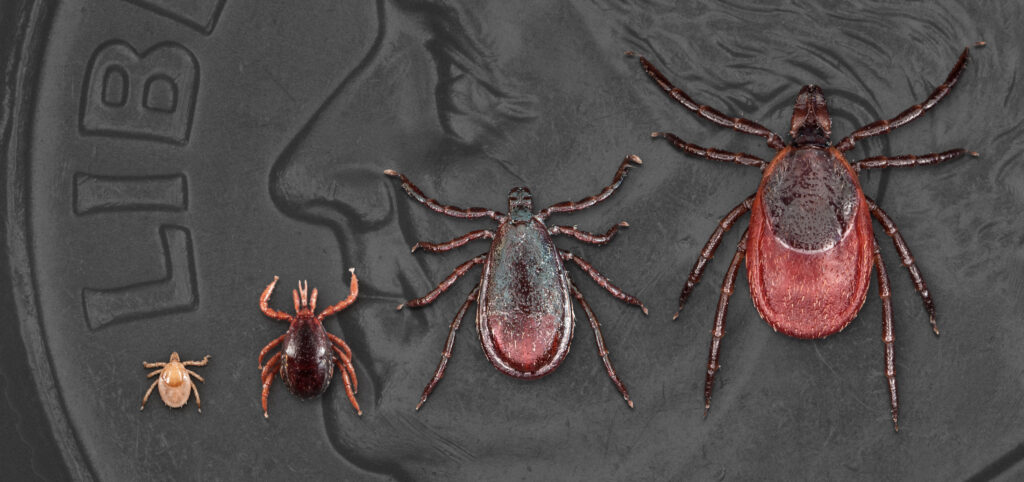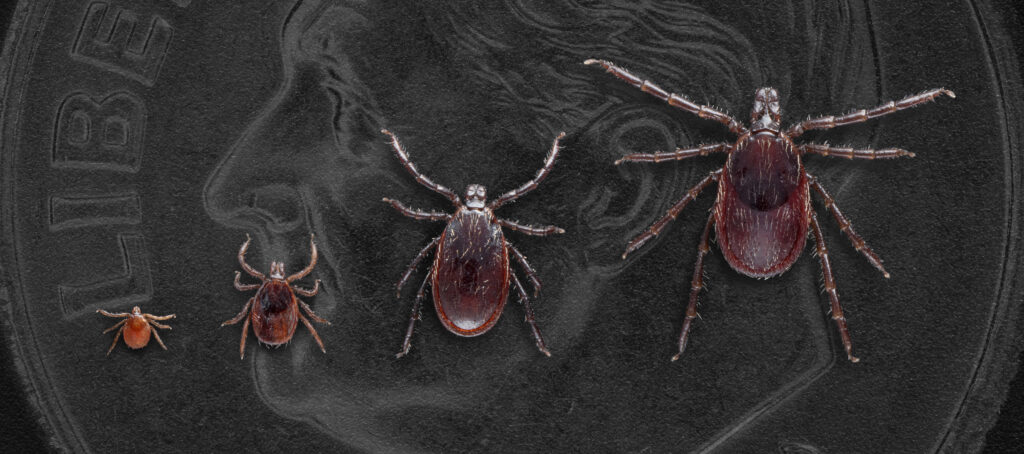

Blacklegged ticks, also known as deer ticks, spread the bacteria that causes Lyme disease in the Northeastern, mid-Atlantic and North Central states. Along the North Pacific Coast, the western blacklegged tick, spreads the bacteria that causes Lyme disease. Ticks bite year-round but are most active during spring and summer (April-September.)
While adult ticks are the size of a sesame seed, immature or nymphal ticks are tiny and only the size of a poppy seed. Most humans are infected with the bacteria that causes Lyme disease through nymphal ticks, which are harder to see.


This lemon poppy seed muffin has five nymphal ticks on it. Can you find them all? Hover over the image at left to reveal where they’re hidden!
